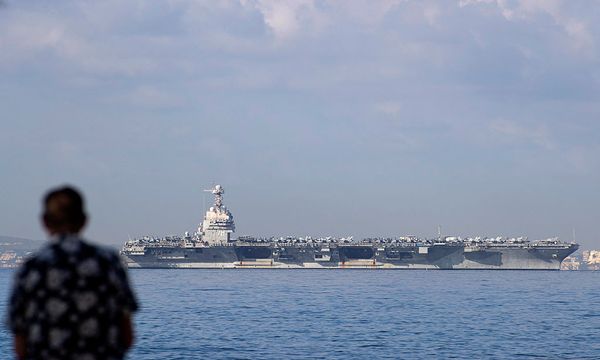
The United States deployed its most formidable conventional weapon —the GBU-57A/B 'Bunker Buster' bomb or Massive Ordnance Penetrator — in 22 June 2025 strikes against Iranian nuclear facilities.
This colossal 30,000-pound bunker-buster bomb achieved its first-ever operational use during Operation Midnight Hammer, when seven B-2 Spirit bombers delivered 14 of these weapons against Iran's most fortified nuclear sites.
This munition is capable of piercing through 200 feet of earth, concrete, and steel, delivering sufficient force to eliminate an adversary's underground stronghold. It is also the very bomb President Donald Trump could authorise to devastate Iran's subterranean nuclear laboratories.
What is the GBU-57A/B 'Bunker Buster' Bomb?
The GBU-57A/B 'bunker buster' bomb, as it is commonly referred to, is widely considered a key military asset that drives Israel's desire for the United States to join its aerial campaign against its long-standing adversary, Iran.
The United States designed and constructed the Massive Ordnance Penetrator (MOP) and remains the sole nation possessing this formidable weapon. Furthermore, only the US possesses the specialised warplanes, specifically the B-2 Spirit stealth bomber, capable of deploying its immense payload.
Pentagon officials confirmed that six GBU-57A/B bombs struck the deeply buried Fordow uranium enrichment facility, whilst additional MOPs targeted the Natanz nuclear complex.
General Dan Caine, Chairman of the Joint Chiefs of Staff, described the mission as "the largest B-2 operational strike in US history," marking the combat debut of weapons specifically engineered to destroy the world's most protected underground installations.
Why the GBU-57A/B Matters for Iran
The US Air Force states that this precision-guided bomb, weighing approximately 30,000 pounds, is specifically designed to target deeply buried and reinforced bunkers and tunnels. It is estimated to be capable of piercing about 200 feet underground before it detonates.
These bombs can be released one after another, effectively burrowing deeper with each impact. Such immense force would likely be essential to inflict significant damage on the Fordow nuclear fuel enrichment plant, which is constructed deep within a mountainside.
Fordow stands as Iran's second nuclear enrichment facility, with Natanz being its primary site, which has already endured Israeli airstrikes. The International Atomic Energy Agency (IAEA) confirmed on Tuesday its belief that these strikes have had 'direct impacts' on Natanz's underground centrifuge halls.
Fordow is a smaller site than Natanz. It is situated inside a mountain near the city of Qom, approximately 60 miles southwest of Tehran. In addition to being buried some 260 feet beneath rock and soil, the facility is reportedly safeguarded by Iranian and Russian surface-to-air missile systems.
However, those air defences are thought to have been compromised by recent Israeli strikes. Moreover, on Saturday, President Trump announced that the US military had conducted 'very successful' attacks on three nuclear sites in Iran: Fordow, Natanz, and Isfahan. He stated that a 'full payload' of bombs had been deployed at the primary target, the Fordow facility.
— Donald J. Trump (@realDonaldTrump) June 21, 2025
According to China Media Group (CMG) reports, six bunker buster bombs were deployed in the assault on Fordow, while 30 Tomahawk missiles targeted other Iranian nuclear sites. A US official also confirmed the involvement of US B-2 Spirit stealth bombers in these strikes.
The Diplomatic Fallout: Talks with Iran in Jeopardy?
Any deeper involvement by the US, whether by supplying bunker-busters to the Israelis or providing other direct military assistance, carries substantial political and diplomatic risks for the president. As the Daily Mail highlights, such actions could jeopardise any prospect of the direct talks President Trump desires with Iran regarding its nuclear ambitions.
The implications extend far beyond the immediate damage to Iranian facilities. America has demonstrated both the capability and willingness to destroy any underground installation, anywhere in the world. This precedent reshapes global strategic calculations, particularly for nations relying on buried facilities for military or nuclear programmes.
For Iran, the strikes represent an existential crisis. The regime must now choose between accepting American dominance or escalating towards full conflict, knowing that its most protected assets remain vulnerable to American airpower.
The bunker-busters have eliminated Iran's sense of strategic sanctuary, forcing Tehran to confront the reality that no depth of burial can protect against American determination backed by overwhelming technological superiority.







